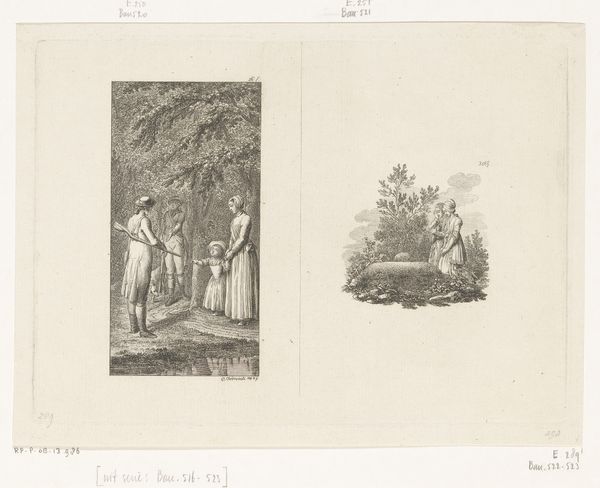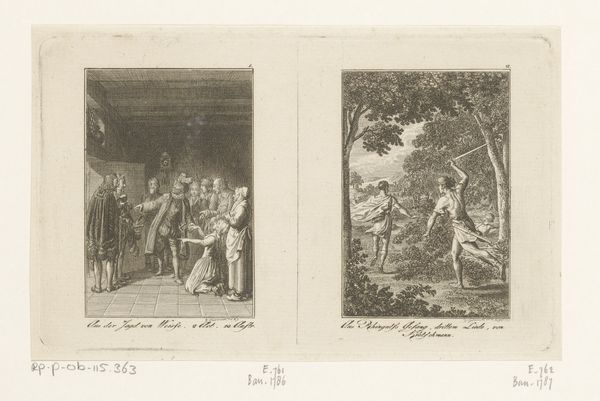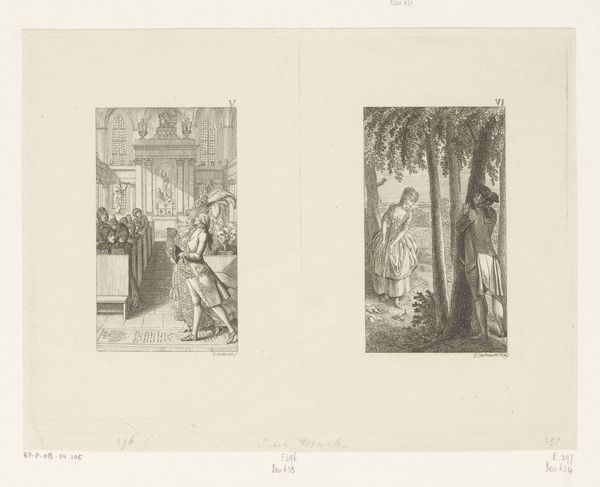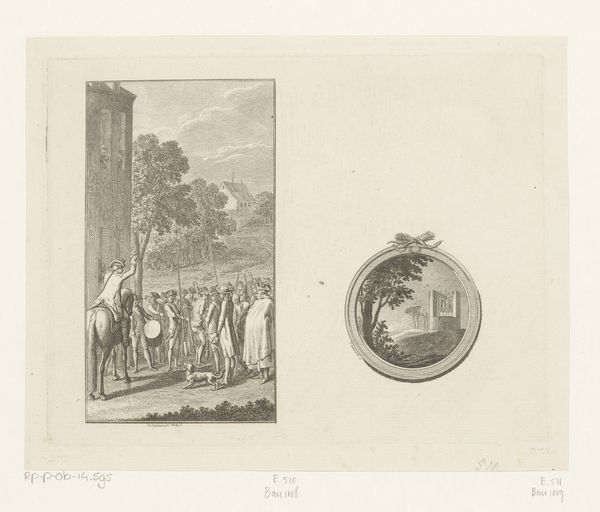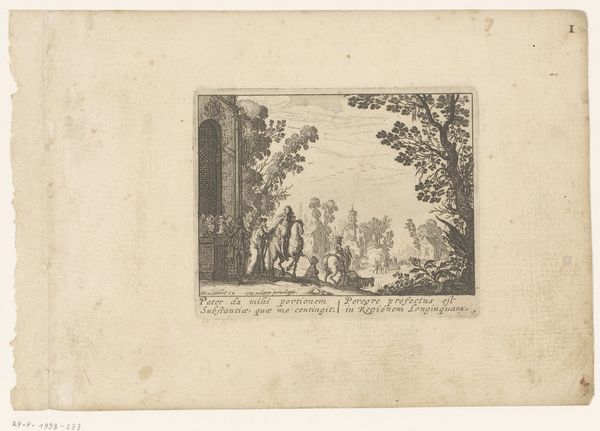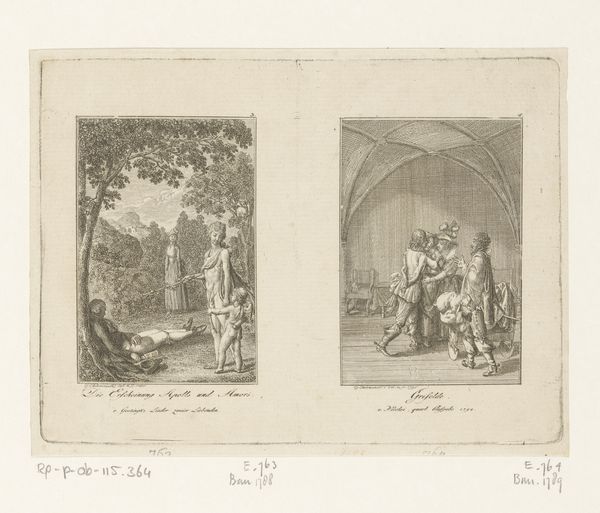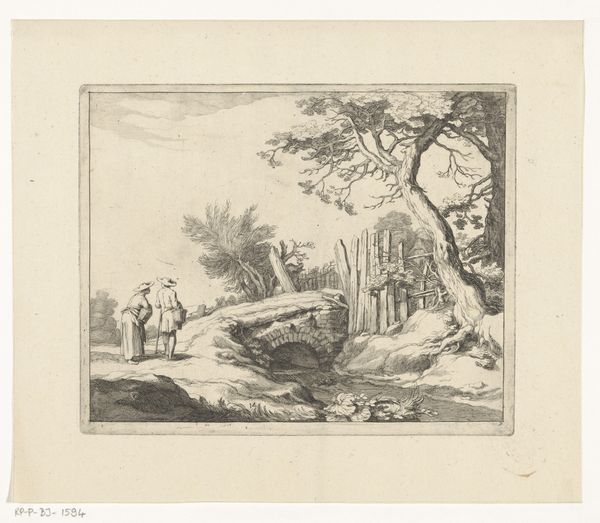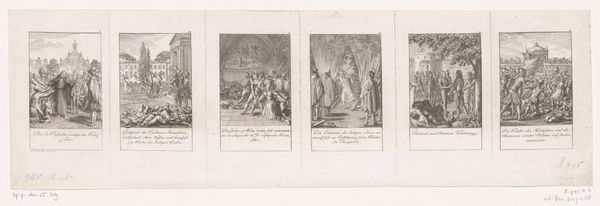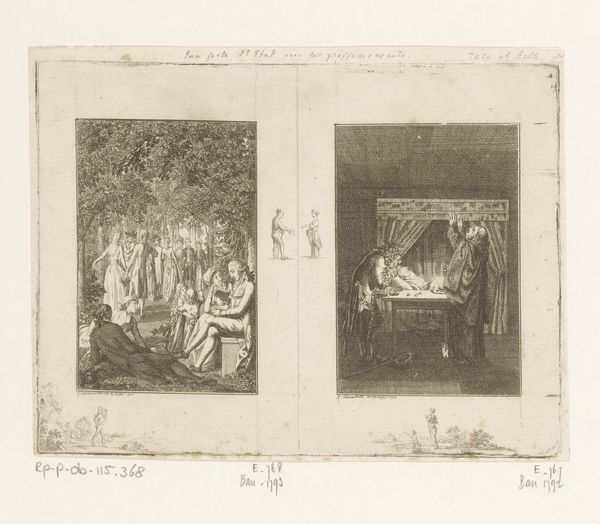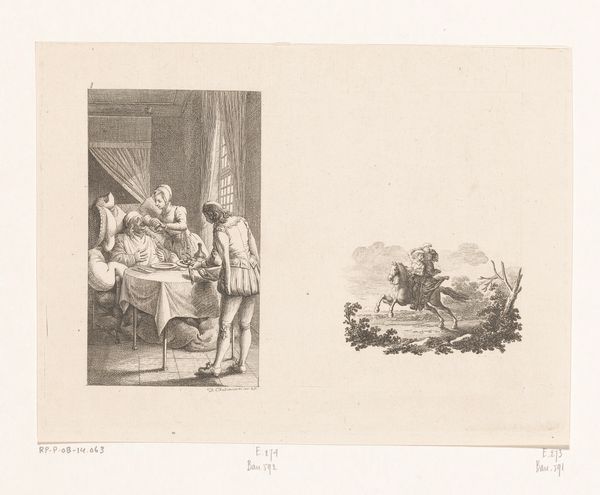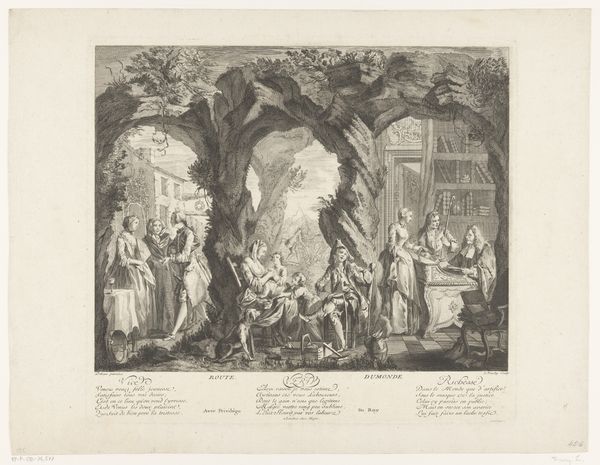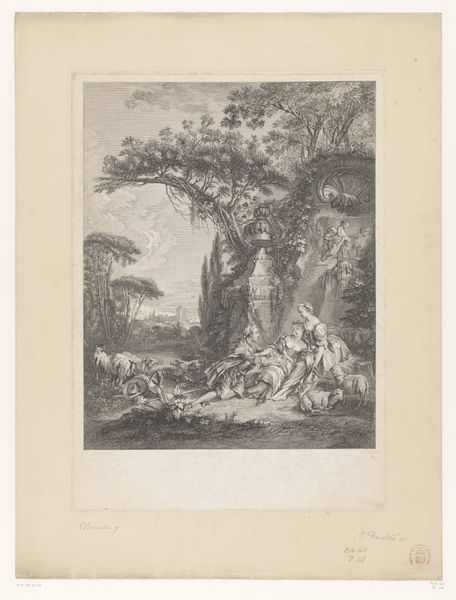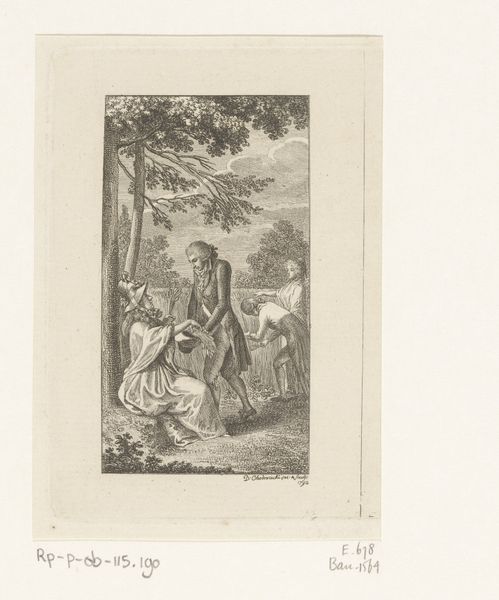
Gil Blas en de struikrovers en vignet met Gil Blas en Don Gonzales Pacheco 1779
0:00
0:00
Dimensions: height 157 mm, width 213 mm
Copyright: Rijks Museum: Open Domain
Curator: This print, crafted in 1779 by Daniel Nikolaus Chodowiecki, is entitled "Gil Blas en de struikrovers en vignet met Gil Blas en Don Gonzales Pacheco." It's an engraving held here at the Rijksmuseum. What strikes you most about it? Editor: My initial reaction is one of stark contrast. The juxtaposition of a chaotic, almost brutal scene with one of calm repose is quite unsettling. There is also a notable hierarchy depicted, from the violence under the woods, to the opulence on the right side. Curator: That contrast is central to its narrative power. Chodowiecki was known for illustrating literary works, and this piece brings to life an episode from Alain-René Lesage's novel, *Gil Blas*. The left panel portrays Gil Blas encountering bandits. The right scene captures Gil Blas’s interactions with Don Gonzales Pacheco, offering a glimpse into different strata of society. The image really uses a social comparison. Editor: Absolutely, and the rendering of violence on the left, feels more socially acceptable since the victim here seems of a lower status. This really calls to mind questions of power and vulnerability that echo through Lesage's work. This depiction feels relevant even now; considering systems of exploitation, of gender-based and economic violence... Curator: Yes, the Baroque style lends itself to such dramatic interpretations. Consider how Chodowiecki employs light and shadow to amplify the emotional intensity, the violence takes center stage. The sharp contrast with the second vignette, is softer in tone, almost peaceful, further emphasizes this tension. Editor: Looking at these two scenarios—the life-or-death struggle and the implied negotiations happening near the canopied bed—really makes you wonder about Gil Blas's navigation of this deeply unjust world. Are we meant to see this as survival, and is survival inherently political in the era? Curator: Precisely. Through the masterful engraving, Chodowiecki isn’t just illustrating a story, he’s prompting a meditation on morality, class, and the social theater of the 18th century. These smaller scenes granted access into worlds otherwise closed off to much of society. Editor: Examining this today really highlights the role of art in reflecting and refracting our own social realities, and challenges us to question whose stories get told, and how. The visual rhetoric used speaks to very relevant power structures, making you reflect about which continue today. Curator: Indeed, this image continues to teach, all these centuries later, offering glimpses into the intricate patterns of 18th-century life. Editor: An era now behind us, yes, but also lingering as we grapple with current social issues. Food for thought.
Comments
No comments
Be the first to comment and join the conversation on the ultimate creative platform.
